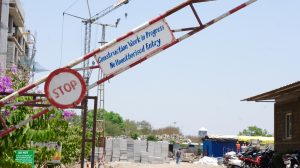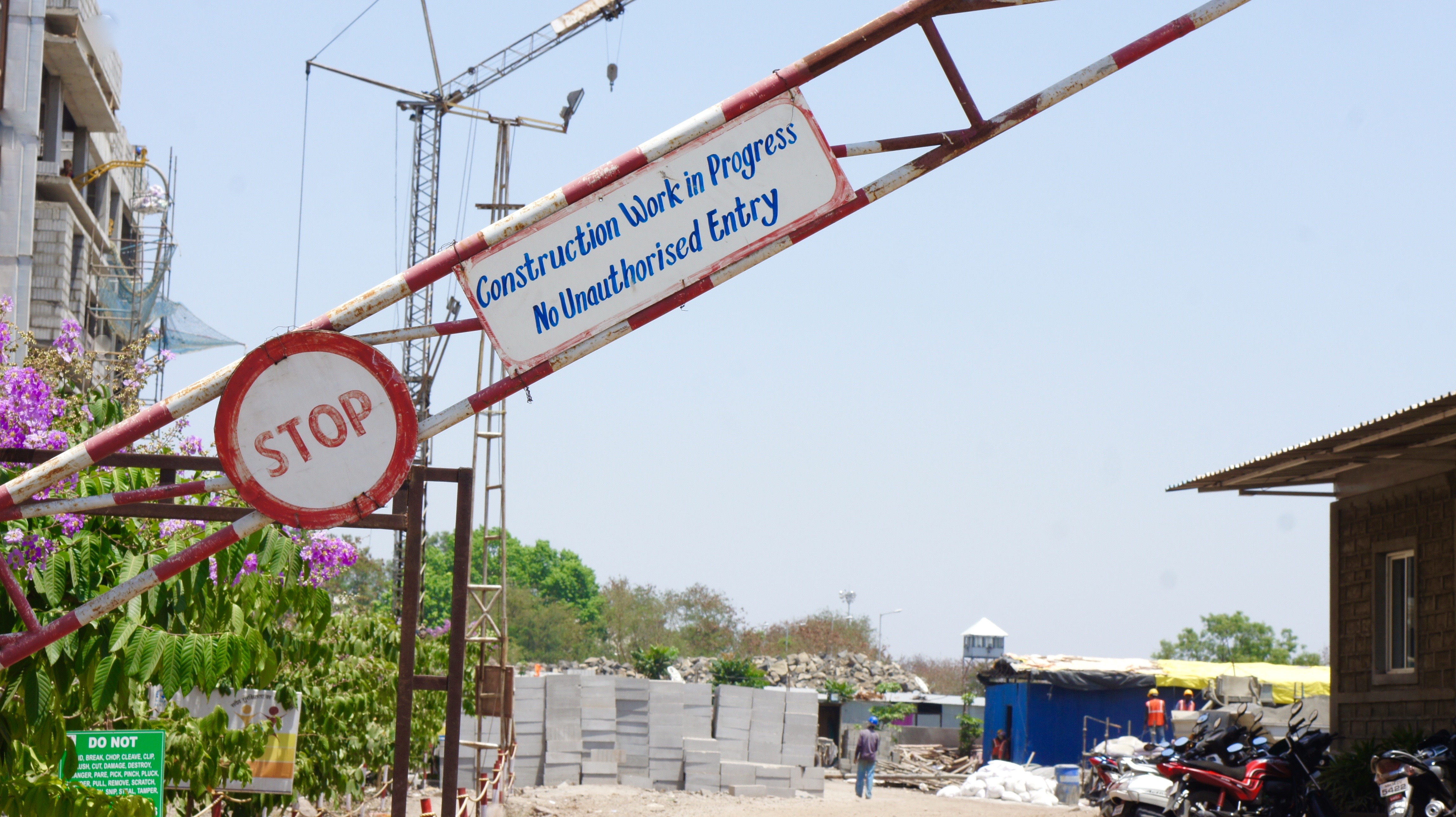
The dark concrete structures that litter the Mumbai to Pune highway catch the eye every five minutes, their imposing shadows breaking a desolate landscape. I wanted to explore why and what these mysterious shapes are that caught my eye in the opening hours of our India trip.
The buildings begin construction under promises of ‘luxury living’ and their partner billboards display photos of computer-generated images of high-rise high-end apartments.
The reality could not be more different. It would seem that most of the building sites have completed the structural core of the building – rising about 8 storeys above the ground with little or no infrastructure surrounding it. This appears to be the biggest problem.
Speaking with some of the students at our host institution (Symbiosis School of Liberal Arts, SSLA), they say that these so called townships are “destined to fail.” They are isolated and have little appeal other than the false lives promised in the advertising.
It requires huge amounts of funding to create new towns and communities. Funds that these developers don’t have. Once the sales stop coming in, the funding runs out and building has to stop.
To understand why these buildings continue to be started we have to look at basic Indian human geography. As I learned yesterday during the first lecture with Mr. Vijay Kunjeer on”Living The Past”, India has a GDP of around two trillion dollars, of this only 13% is income from agriculture, yet 50% of Indians 1.25 billion people are employed in the sector. This means that the population is continuing to shift towards an urban centric lifestyle – although the figure of Indians living in ‘urban’ areas is still only 30% but is growing.
This has caused a massive housing crisis that has lead to cities such as Mumbai becoming more and more overcrowded. So the middle-class want out and these building were meant to be their lifesaver. Instead, Indians are seeing more developers dumping their projects with up to 90% of the total funding. Even projects that haven’t been abandoned face lengthy delays. The property research firm, Liases Foras, has found that the completion time of over half the real estate projects in India are delayed by over 12 months.
This has lead to protests in various cities and legal proceedings appear to be beginning against multiple firms. The latest advice to Indians is to only buy completed flats.

It reminded me of a BBC documentary about China and of the huge empty cities that lye empty, meant to house thousands of families to accommodate the new factories. But the factories never came.
The uncompleted projects are not the only problems the construction industry face in India. Sadly, news stories of significant building structural failures appear in the news and people continue to lose their lives as the result of poor building practices. Just a few days before we came a section of road collapsed onto 26 workers killing them instantly.
Construction in India has a long way to go to improve its image and it’s sad that one of the most visually striking first impressions is that of broken promises and wasted potential.
